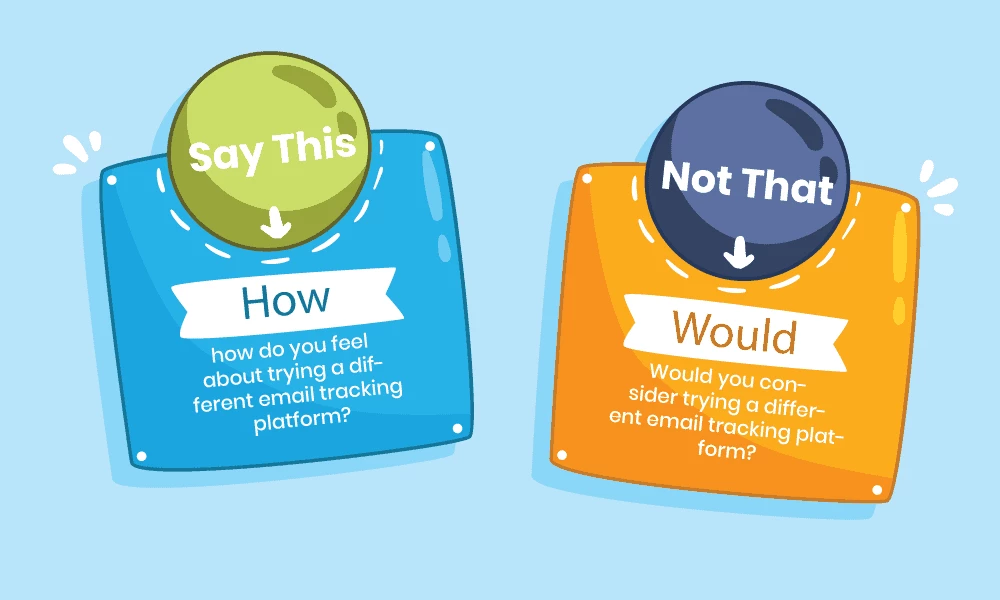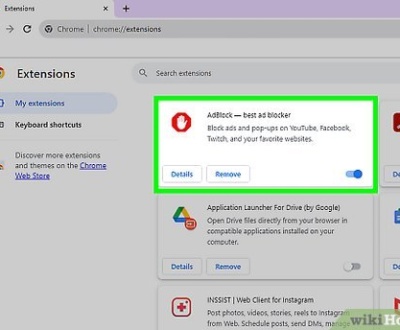Interested in Cold Calling? You must be desperate…
Never have I ever spoken to one of my clients who has been keen to do cold calls!
Cold calling is a vital piece of outbound sales. When sales reps discover new leads, they pick up the phone and start dialing. The goal is to connect with as many potential customers as possible and move them into the next stage of the buying process.
WHAT IS COLD CALLING?
As a member of several sales-related LinkedIn Groups, I’ve noticed a common misconception within the sales community with respect to cold calling, warm calls, social calls, and even referrals.
What is cold calling? For the record, the definition of “cold calling” isn’t blindly picking up the phone and dialing random numbers, and pitching your product or service to whoever answers. That is a “method” of cold calling, (and the lowest ROI producing method known to sales at that)
Cold Calling Definition:
Cold calling is contacting any suspect/prospect who currently isn’t “raising their hand” at the moment.
So even if you call your best client and ask for referrals… guess what… When you call that referral, it’s still a “cold call” because the prospect wasn’t raising their hand nor asked to be contacted nor was expecting your call. It’s still an interruption. And you know what? That’s OK!
A salesperson shouldn’t base the prospect’s “temperature” on how much they know about the prospect but rather, how much the prospect knows and has an interest in the product or service a salesperson is selling.
Warm Call Definition:
A warm call is when for example a lead form gets filled out on a website. The prospect has some level of interest.
A hot lead is when an inbound call comes in and the prospect says “I spoke with so and so and they bought your system and I want one too!”
Or, your current clients come to you and say they need more or something else.
Social Selling Definition:
Social calls / Social selling is using social media tools such as LinkedIn, Twitter, Facebook, etc to brand you and or your company as an industry expert as well as to lead capture a prospect’s contact data in order to utilize drip marketing campaign techniques in order to continue to brand and position oneself as the solution provider for a prospect’s problem.
To be successful in sales, you will need to fill your sales pipeline from all channels.
Cold Calling Tips
Know When to Call
No one wants to waste their time calling back the same prospect over and over. Yet if you’re calling them at the wrong times, that’s just what will happen.
Wait, there are right times and wrong times to call someone? Absolutely!
Peak Sales Recruiting says one of the worst times to ring up a prospect is on a Friday afternoon. This makes sense, as, by this point, most people are tuned out.
They’re waiting out the final few hours of work so they can start their weekends.

Another poor time to make a sales call is Monday morning. Again, this one makes sense when you think about it. Many people are kind of in a daze on Monday morning, dragging themselves to the office while wishing it was still the weekend.
Of course, your calls wouldn’t be answered then.
When should you make a cold call? Try Wednesday or Thursday. You have two windows: early morning or later in the day.
If you’re an early bird, then try cold calling anytime between 6:45 and 9 in the morning. If you prefer the afternoon, then give your prospect a sales call from 4 p.m. to 6 p.m.
Try to err on the earlier side of things, since you might miss your prospect if they leave the office at 5 o’clock on the dot.
No matter which day you choose to call someone, getting the time of the day right is among the top cold calling tips we can give you.
Peak Sales Recruiting says that you can see a 391% conversion rate boost by calling a lead a minute after they signed up.
That soon? Yes, that soon. This is peak curiosity time for the prospect, which may lead to higher receptivity.
Do the Work Before the Cold Call
Before you even pick up the phone, do your research. This, again, is among the key cold calling tips anybody can share.
Find out who the decision-maker is likely to be, what time of the day they usually take calls, and what their role in the company is.
The way you build interest in your product or services will depend on these details.
Seriously, do the research, don’t wing it.
Chucking this step may lead you to talk to the wrong person — a waste of valuable time.
At this point, if no information is available online, check with an insider at that company for help finding out who should receive your cold call — but only if you’re not embarrassed by asking, “Who’s in charge of……….”
That’s not cool anymore.
You can also just use LinkedIn to find out who’s the decision-making person at the workplace of a lead you wanted to call.
Learn the Right Tone
You could say all the right words, but if your tone of voice doesn’t match, then you’re not going to make the sale.
Sales software company Close.io says that, according to research, your tone can determine how successful the cold call will be at a staggering rate of 93 percent.
Yes, that’s right, 93%.
With such a stunning statistic, you can’t afford to use the wrong tone. No monotone here, please. You also have to sound confident.
If you’re bored, your prospects will hear it, and they won’t want to close a deal with you. After all, if you, the person selling the products, can’t be enthusiastic, why should they?
It can be tough to maintain that enthusiasm day in and day out, but your tone must be confident yet friendly during all calls.
You want to be sound assured and strong but not too pushy. There’s no room for aggression in successful cold calls.
Yes, you’re trying to make a sale, but maintaining the same tone, even if things aren’t going your way, is important.
Make Small Talk, It’s Okay
Don’t immediately launch into your spiel when someone picks up the phone! It may seem counter-intuitive but we’ve found that it’s much better to build rapport first.
Make small talk about something work-related before diving in with your pitch.
For example, ask how their day went so far, what projects are on their plate this week, or how long it took them to travel to work.
This is a great way to find out if you’re speaking with the right person and will allow you to gauge quick interest in your products or services before selling them.

Once the small talk is over, immediately offer something that’s of value: give away an insightful resource, send a sample of your product or service, or give some other piece of free information.
If they take the bait and it sounds like they might be interested in what you sell, go ahead and start pitching!
Use a Detailed Script
The first few times you make a cold call, you’re going to be nervous. This is especially true if you’re a new sales rep who has never called a lead without prior contact over email or some such.
Even some seasoned salespeople can feel that a cold call is daunting.
When you’re nervous, you tend to talk too fast, stumble on your words, and forget important points. None of these are good if you’re trying to make some cold-call sales.
If you talk too fast, your prospect might not be able to decipher all the points you’re trying to make. You’re practically talking over yourself in your anxiety.
If you stumble on your words, then again, your message is not clear. Finally, if you forget important points, then the prospect is not getting the whole sales pitch.
Why would they say yes to buying your product or service? They don’t have the full picture.
It’s okay to be nervous, especially if this is your first cold call or if you’re new to sales. However, you cannot be jumpy when talking with a prospect. This is where a cold calling script comes in handy.
This is a really effective cold calling tip.
If you have a line-by-line dialogue to follow that gives you pointers on what to say, you can ace your sales pitch.
But just because you have a script doesn’t mean you can let your tone go by the wayside. You don’t have to recite the script line-by-line, but use it as a guide.
Your prospect will be able to tell if you’re reading the cold calling script verbatim because you’ll sound robotic and inauthentic.
Remember to keep that cheerful, inviting tone in your voice.
Talk About How You Can Help Them, Not the Features of Your Product
People don’t care what products you make; they want to know how you can make their life easier. If you can convey that, you have a sale!
For example, don’t start by saying “We make the best laptop on the market.” Tell them “Our laptops are built with a metallic alloy that offers high durability and portability, so they don’t easily break, no matter how many times you drop the device.”
Remember: people buy value, not things.
When people ask for more information about your product or service, don’t give them an extensive list of specs. Keep it simple.
You’re trying to get them interested in what you have to offer while explaining how it benefits THEM personally — not just their company or family overall.
If they really need more information before deciding if they want to work with you or buy from you, tell them exactly where to find it on their own time.
Even though you may not make a sale right away, you’ll see that this is a great cold calling technique because it paves the way for easier and more effective follow-up calls.
Don’t Be Afraid to Leave a Voicemail
Uh-oh! You tried calling your prospect and they didn’t answer. Now what?
Immediately, you want to leave a voicemail. Your company might not have a script for voicemails, which means you’re on your own.
How do you approach a voicemail?
You want to keep the message short and concise.
Peak Sales Recruiting advises your voicemail be eight to 14 seconds, no more than that.
It’s okay if you didn’t know that and left a voicemail that was far longer, but now that you’re aware, you can shorten it for next time.
Fourteen seconds do go quickly. To ensure you can fit in your sales pitch in that time, you might want to practice. Time yourself and see how much you can fit in that 14-second span.
Then, cut down on your message so you’re only giving the most important information.
For instance, you want the prospect to know your name, your company, and why you’re calling. You also want to give them your phone number so they can get in touch. A little trick I used to use is by repeating my number twice so they were more inclined to call it back.
Don’t rush through this last part; it’s very important.
Voicemails can be an invaluable method of keeping the ball rolling with a prospect. After all, with spam calls and telemarketers aplenty, most people don’t answer their phone call if they don’t recognize the number.
By leaving a voicemail, you incentivize the prospect to call you back.
Get a Little Personal
Don’t hesitate to get a bit personal (warm) when you are making a cold call. It’s still a conversation and it should feel like you’re friendly, at the least.

There’s nothing that will make people more interested in what you’re offering than coming off as warm and friendly!
If it seems like they’ve had a rough day, tell them some things you appreciate about their company.
If you know something new or interesting about something they do or work on, share it with them. People are often put at ease when they find out you have a genuine interest in them as a person — and the feeling is usually mutual!
Sell yourself.
Every cold call is an opportunity to show people that you’re a nice and smart person, and that you care about them as a potential customer.
Even if your product or service is great, striking a friendly conversation and showing people that you’re genuinely interested in helping them out will make it easier for them to see things from your perspective!
Be Prepared to Follow up
Don’t leave the ball completely in the prospect’s court, though.
When you have an initial meeting with a prospect, your work is far from done. You might need to call a minimum of five times from there.
At least that’s the experience of most sales teams, about 80% of them.
Whether your prospect answers the phone right away or you need to leave them a voicemail, it’s your responsibility to call them back.
Don’t wait for them to get in touch with you.
After all, you’re the one trying to sell to them, not vice-versa. They have no obligation to maintain further contact, but you do.
Sell What You Truly Understand and Believe In
If you’re not 100% confident in a product or service — don’t try to sell it!
People can tell when you don’t believe in something — and they’ll associate that feeling with your business as a whole.
Instead, be honest and say things like “I think this is a great product, but I’m still learning more about it. If our company doesn’t end up working with you, I hope you’ll still end up finding exactly what you need.”
When it comes time to actually sell, make sure it’s something you’re absolutely proud of and confident in.
Think about something that gets you really excited — whether it’s a sport, hobby, or even another job. Are you always thrilled to talk about that with people?
If the answer is yes, don’t be afraid to let your excitement show through when talking to potential contacts! People love hearing enthusiasm in the voices of others, even if it is a cold caller. If someone sounds genuinely excited, it makes them feel a little excited too.
It’s easier than ever for people to tune out automated messages these days, but by sounding enthusiastic (without sounding fake!) you’ll be sure to get their attention.
Give the Prospect Time to Talk, Too
The average cold call is about two minutes, says ProSales Connection, LLC. It’s okay if it goes a few minutes longer, but a 10-minute cold call is unusual.
Besides, you’re a business, and you have to reach out to X amount of people every day. Spending more than a few minutes per cold call will not help you achieve your goals.
During that short call, you must give the prospect the opportunity to talk. You want to learn more about them, including their problems and their needs.
Then you can position your product/service as the perfect solution. Remember that your prospect is an individual, not just another number in a long line of leads.
Speak in an Open-Ended Manner
You know how much your tone matters, but what you say is almost as important.
Particularly, the way you ask questions can be the difference between getting the prospect to give you pertinent information or not.
You want to focus on asking questions in an open-ended way. Here’s an example of what we mean:

Do you see the difference between the questions? The first question invites the prospect to talk about their thoughts and feelings.
They’re telling you about themselves, which is what you need. The second question requires a simple yes or no answer. You learn nothing about the prospect in the process.
If you’re the type who asks yes/no questions, try peppering in a few more open-ended questions next time you talk to a prospect.
Even if you don’t get the sale, you’ll be impressed with how much more info you glean.
Don’t Give up Prematurely
The nerves associated with calling a complete stranger, the strong chance of rejection … cold calling is hard.
It’s no wonder then that almost half of the sales reps (44%) will quit if their first follow-up is not successful.
That’s a lot of sales professional giving up awfully early! We’re not advising you to harass your prospects, but do give them more than a single follow-up.
Try four or five times. If the prospect stops answering, you know you should back off.
You must also stop calling if they tell you outright they’re not interested.
Once you get to that point, you know you’ve done all you can to win them over and it just didn’t work out.
Cold caller, onto the next one!
EngageBay Drip Campaigns — Automate Email Sending and Boost Your Click Rates
15. Learn to Handle the ‘No’
Although we’re giving tips here on what works and what doesn’t, there are various degrees of results possible depending on your strategy.
Even if you follow these tips exactly as stated, some people will still say “no.” That’s why it’s important to take rejection well and keep going until you have a positive result!
For example, I once cold called a potential client for about 45 minutes before being put on hold. The person left me hanging there for an hour before returning to tell me that they didn’t have any projects available at the time.
During that entire hour, I remained persistent and made small talk about things we had in common.

When I finally gave up and said goodbye, my contact exclaimed: “Wait! You were really interesting — can you send me your information? Maybe we’ll be able to work something else out later!”
Had I given up after only a few minutes, the outcome could have been different. Be positive even after you get a ‘no’.
The next time you get rejected, ask the person on the phone, “Who did you give my number to? Can I have a name?”
If they won’t tell you what referrals they’ve given your information to, at least find out if someone is interested. You can then go that route instead.
The Serial Seller Last Words
Throughout my career in sales, I have loved cold calling. I find it challenging and very rewarding when something comes of it.
I definitely believe that it is much easier to sell something that you believe in and as a business owner, you really should be able to sell what yo do!
On the other hand, cold calling is hard and requires a lot of effort.
At The Serial Seller, we rely on warm calls a lot. Most of these warm calls are generated by our blog, our outbound emails, PPC ads, etc.
Very rarely do we now make cold calls to win business.
But… if you have tried cold emails, PPC ads, SEO and none of them seem to work for your business, then cold calling may get you into accounts that are also rejecting your competitors emails, PPC ads and blogs.
If you want help with your businesses Sales & Marketing, Book A Call With Us Now!
About us and this blog
We are a Full-Service Sales & Marketing provider that aims to help small to medium businesses increase their leads and sales while helping remove the business owners from their day-to-day activities so they can focus more on the long-term goals of their business.
Book a Meeting with us!
We offer Done-For-You Sales, Sales Coaching, and Advisory as well as Digital Marketing Services. If you want to increase the leads generated for your business and need some guidance and accountability, book a call with us now.
Subscribe to our newsletter!
More from our blog
See all postsRecent Posts
- How Do You Stop Google Ads May 9, 2025
- How to Make Money Off Social Media May 5, 2025
- How to Duplicate Page WordPress May 1, 2025









